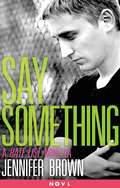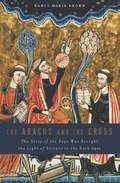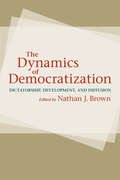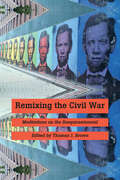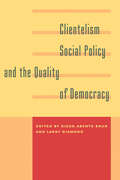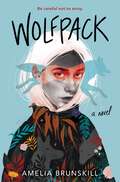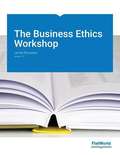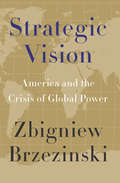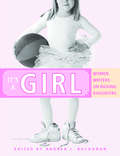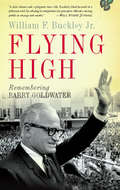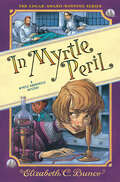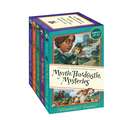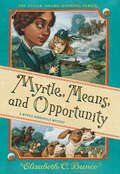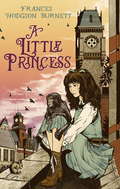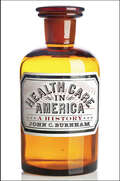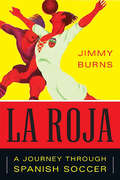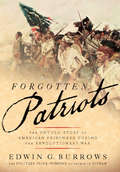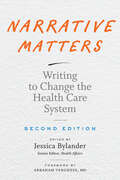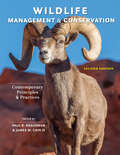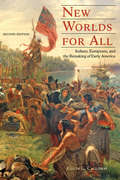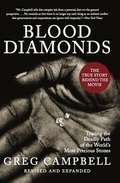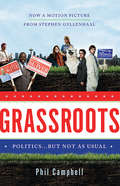- Table View
- List View
Say Something: A Hate List Novella
by Jennifer BrownIn Hate List, Jennifer Brown delivered a powerful story about grief, friendship, and forgiveness in the aftermath of a school shooting. Now, she explores an evocative new narrative while digging deeper into the themes first touched upon in her debut novel.David Judy knows what it's like to be bullied. Shy and gentle, with a soft voice and "a girl's name for a last name," he is a prime target. Thankfully, there's one girl David feels at ease with -- Valerie, the girl who's been dating his neighbor and sometimes-friend, Nick. Valerie is kind to David and pulls him into their circle of outcast friends, where he finally feels like he (sort of) belongs. So when David starts to suspect that Nick and his friend Jeremy are planning a revenge plot against their tormentors, he wrestles with whether or not to tell someone. By the time he finally works up the courage to say something...it's too late.David tries to put what he knows behind him -- to forget and move on -- but that's hard to do as senior year starts and he watches his old friend, Valerie, struggle in a deep, dark place of guilt and confusion. It's time to speak up. David may not be able to end bullying, but by standing up, he might just make a difference. And that's what matters.
The Abacus and the Cross: The Story of the Pope Who Brought the Light of Science to the Dark Ages
by Nancy Marie BrownThe medieval Catholic Church, widely considered a source of intolerance and inquisitorial fervor, was not anti-science during the Dark Ages-in fact, the pope in the year 1000 was the leading mathematician and astronomer of his day. Called "The Scientist Pope,” Gerbert of Aurillac rose from peasant beginnings to lead the church. By turns a teacher, traitor, kingmaker, and visionary, Gerbert is the first Christian known to teach math using the nine Arabic numerals and zero.In The Abacus and the Cross, Nancy Marie Brown skillfully explores the new learning Gerbert brought to Europe. A fascinating narrative of one remarkable math teacher, The Abacus and the Cross will captivate readers of history, science, and religion alike.
The Dynamics of Democratization: Dictatorship, Development, and Diffusion
by Nathan J. BrownThe explosive spread of democracy has radically transformed the international political landscape and captured the attention of academics, policy makers, and activists alike. With interest in democratization still growing, Nathan J. Brown and other leading political scientists assess the current state of the field, reflecting on the causes and diffusion of democracy over the past two decades.The volume focuses on three issues very much at the heart of discussions about democracy today: dictatorship, development, and diffusion. The essays first explore the surprising but necessary relationship between democracy and authoritarianism; they next analyze the introduction of democracy in developing countries; last, they examine how international factors affect the democratization process. In exploring these key issues, the contributors ask themselves three questions: What causes a democracy to emerge and succeed? Does democracy make things better? Can democracy be successfully promoted? In contemplating these questions, The Dynamics of Democratization offers a frank and critical assessment of the field for students and scholars of comparative politics and the political economy of development. Contributors: Gregg A. Brazinsky, George Washington University; Nathan J. Brown, George Washington University; Kathleen Bruhn, University of California at Santa Barbara; Valerie J. Bunce, Cornell University; José Antonio Cheibub, University of Illinois at Urbana-Champaign; Bruce J. Dickson, George Washington University; M. Steven Fish, University of California at Berkeley; John Gerring, Boston University; Henry E. Hale, George Washington University; Susan D. Hyde, Yale University; Craig M. Kauffman, George Washington University; Staffan I. Lindberg, University of Florida; Sara Meerow, University of Amsterdam; James Raymond Vreeland, Georgetown University; Sharon L. Wolchik, George Washington University
Remixing the Civil War: Meditations on the Sesquicentennial
by Thomas J. BrownIn 1961, the historian and poet Robert Penn Warren remarked that "the Civil War is, for the American imagination, the great single event of our history." This volume reconsiders whether, fifty years later, Warren’s claim still holds true.Essays from specialists in art, literature, and history examine how contemporary culture represents and interprets the Civil War. They look at the works of more than thirty artists and writers as well as multiple movements—political and social—to reveal the many and provocative ways in which Americans engage the Civil War today. The book includes chapters on the place of Abraham Lincoln in Barack Obama’s presidential campaign, controversies over the symbolism of the Confederate flag, and the proliferation of "Juneteenth" observances. Remixing the Civil War pays special attention to the works of African Americans and white southerners, for whom the Civil War was a revolutionary and defining moment. Such prominent scholars as Robert H. Brinkmeyer Jr., W. Fitzhugh Brundage, Kirk Savage, and Elizabeth Young explore the works of major artists and lesser-known figures, including Bobbie Ann Mason, Kara Walker, Dario Robleto, and John Huddleston. The authors find that Americans today openly and playfully manipulate familiar images of the Civil War to explore the malleability and permeability of traditional social categories like national identity, gender, and race. This collection continues the conversation Warren began fifty years ago, although taking it in unorthodox and challenging directions, to offer fresh and stimulating perspectives on the war’s presence in the collective imagination of the nation.
Remixing the Civil War: Meditations on the Sesquicentennial
by Thomas J. BrownIn 1961, the historian and poet Robert Penn Warren remarked that "the Civil War is, for the American imagination, the great single event of our history." This volume reconsiders whether, fifty years later, Warren’s claim still holds true.Essays from specialists in art, literature, and history examine how contemporary culture represents and interprets the Civil War. They look at the works of more than thirty artists and writers as well as multiple movements—political and social—to reveal the many and provocative ways in which Americans engage the Civil War today. The book includes chapters on the place of Abraham Lincoln in Barack Obama’s presidential campaign, controversies over the symbolism of the Confederate flag, and the proliferation of "Juneteenth" observances. Remixing the Civil War pays special attention to the works of African Americans and white southerners, for whom the Civil War was a revolutionary and defining moment. Such prominent scholars as Robert H. Brinkmeyer Jr., W. Fitzhugh Brundage, Kirk Savage, and Elizabeth Young explore the works of major artists and lesser-known figures, including Bobbie Ann Mason, Kara Walker, Dario Robleto, and John Huddleston. The authors find that Americans today openly and playfully manipulate familiar images of the Civil War to explore the malleability and permeability of traditional social categories like national identity, gender, and race. This collection continues the conversation Warren began fifty years ago, although taking it in unorthodox and challenging directions, to offer fresh and stimulating perspectives on the war’s presence in the collective imagination of the nation.
Clientelism, Social Policy, and the Quality of Democracy
by Diego Abente Brun Larry DiamondWhat happens when vote buying becomes a means of social policy? Although one could cynically ask this question just as easily about the United States’s mature democracy, Diego Abente Brun and Larry Diamond ask this question about democracies in the developing world through an assessment of political clientelism, or what is commonly known as patronage. Studies of political clientelism, whether deployed through traditional vote-buying techniques or through the politicized use of social spending, were a priority in the 1970s, when democratization efforts around the world flourished. With the rise of the Washington Consensus and neoliberal economic policies during the late-1980s, clientelism studies were moved to the back of the scholarly agenda. Abente Brun and Diamond invited some of the best social scientists in the field to systematically explore how political clientelism works and evolves in the context of modern developing democracies, with particular reference to social policies aimed at reducing poverty.Clientelism, Social Policy, and the Quality of Democracy is balanced between a section devoted to understanding clientelism’s infamous effects and history in Latin America and a section that draws out implications for other regions, specifically Africa, Southeast Asia, and Eastern and Central Europe. These rich and instructive case studies glean larger comparative lessons that can help scholars understand how countries regulate the natural sociological reflex toward clientelistic ties in their quest to build that most elusive of all political structures—a fair, efficient, and accountable state based on impersonal criteria and the rule of law.In an era when democracy is increasingly snagged on the age-old practice of patronage, students and scholars of political science, comparative politics, democratization, and international development and economics will be interested in this assessment, which calls for the study of better, more efficient, and just governance.
Wolfpack
by Amelia BrunskillThis shocking, suspenseful novel about a group of teenage girls living in a cult reveals the terrifying paranoia and suspicion that emerges when one of them goes missing– perfect for fans of We Were Liars. Nine girls bound together in beautiful, virtuous Havenwood, a refuge from an unsafe world. Then there are eight one of them gone — departed with no warning. Did this member of their pack stray willingly, or did something more sinister occur? The girls seek answers not knowing if they should be angry or frightened or perhaps, they should be both.
The Business Ethics Workshop v 1.0
by James BrusseauOn a good day in the business ethics classroom discussion charges forward; students have read the assigned case study, they're engaged by the conflict and want to work through it. Then, there's a bad day: students didn't bother to do the reading and the hour sags listlessly. The key to going the first way is case studies that students want to read, and The Business Ethics Workshop by James Brusseau provides them with reality and engagement. Reality: No stilted and contrived stories about Steve Smith and Jane Jones. Excerpts from blogs and newspapers bring the weight--and provocation--of the world as it's actually happening to the classroom.
Strategic Vision: America and the Crisis of Global Power
by Zbigniew BrzezinskiEminent scholar Zbigniew Brzezinski's New York Times bestselling blueprint for American foreign policy strategy in the twenty-first centuryThe world today faces a crisis of power, caused by the dramatic shift in its center of gravity from the West to the East, by the dynamic political awakening of people worldwide, and by the deterioration of America's performance both domestically and internationally. As a result, America's position as a world superpower is far from secure.In Strategic Vision, former National Security Advisor Zbigniew Brzezinski argues that America can and should be actively engaged in navigating this period of crisis and provides a strategic blueprint for America to revitalize its global status and promote a peaceful twenty-first century. As Brzezinski eloquently shows, without an America that is economically vital, socially appealing, responsibly powerful, and capable of sustaining an intelligent foreign engagement, the geopolitical prospects for the West could become increasingly grave.
It's a Girl: Women Writers on Raising Daughters
by Andrea BuchananThe most popular question any pregnant woman is asked - aside from "When are you due?" - has got to be "Are you having a girl or a boy?" When author Andrea Buchanan was pregnant with her daughter, she was thrilled to be expecting a girl. Some people were happy for her; visions of flouncy pink dresses and promises of mother-daughter bonding were the predictable responses. Other people, though, were concerned: "Is your husband OK with that?" "You can try again." "Girls are tough." This mixed message led her to explore the issue herself, with help from her fellow writers and moms, many of whom had had the same experience. As she did in It's a Boy: Women Writers on Raising Sons, Buchanan and her contributors take on what it's really like to raise a child-in this case, a girl-from babyhood to adulthood.It's a Girl, is a wide-ranging, often humorous, and honest collection of essays about the experience of the mother-daughter bond, taking on topics like "princess power" ("Shining, Shimmering, Splendid"), adding a girl to a brood of boys ("Confessions of a Tomboy Mom"), dealing with a daughter's eating disorder ("The Food Rules"), and mothering "hardcore mini-feminists" ("Tough Girls").
Flying High: Remembering Barry Goldwater
by William F. Buckley Jr.In Flying High, William F. Buckley Jr. offers his lyrical remembrance of a singular era in American politics, and a tribute to the modern Conservative movement's first presidential standard-bearer, Barry Goldwater. Goldwater was in many ways the perfect candidate: self-reliant, unpretentious, unshakably honest, and dashingly handsome. And although he lost the election, he electrified millions of voters with his integrity and a sense of decency-qualities that made him a natural spokesman for Conservative ideals and an inspiration for decades to come.In an era when Republicans are looking for a leader, Flying High is a reminder of how real political visionaries inspire devotion.
Flying High: Remembering Barry Goldwater
by William F. Buckley Jr.If any two people can be called indispensable in launching the conservative movement in American politics, they are William F. Buckley Jr. and Barry Goldwater. Buckley's National Review was at the center of conservative political analysis from the mid-fifties onward. But the policy intellectuals knew that to actually change the way the country was run, they needed a presidential candidate, and the man they turned to was Arizona Senator Barry Goldwater. Goldwater was in many ways the perfect choice: self-reliant, unpretentious, unshakably honest and dashingly handsome, with a devoted following that grew throughout the fifties and early sixties. He possessed deep integrity and a sense of decency that made him a natural spokesman for conservative ideals. But his flaws were a product of his virtues. He wouldn't't bend his opinions to make himself more popular, he insisted on using his own inexperienced advisors to run his presidential campaign, and in the end he electrified a large portion of the electorate but lost the great majority. Flying High is Buckley's partly fictional tribute to the man who was in many ways his alter ego in the conservative movement. It is the story of two men who looked as if they were on the losing side of political events, but were kept aloft by the conviction that in fact they were making history.
In Myrtle Peril (Myrtle Hardcastle Mystery #4)
by Elizabeth C. BunceThis twisty, cozy murder mystery finds Amateur Detective Myrtle Hardcastle investigating the case of an heiress lost at sea—an inquiry that runs aground when a murder in plain sight has no apparent victim. When a mysterious girl attempts to stake her claim to the Snowcroft family fortune, Myrtle Hardcastle&’s father, a lawyer, is asked to help prove—or disprove—the girl&’s identity. Is this truly Ethel Snowcroft, believed to be lost at sea with her parents, or a con artist chasing a windfall? Mr. Hardcastle&’s pursuit of the case takes a detour when he&’s hospitalized for a tonsillectomy—only to witness a murder. Or does he? With no body at the scene, Myrtle and her governess, Miss Judson, fear the so-called murder was a feverish delusion—until a critical piece of evidence appears. But where&’s the victim? And who at the hospital could be harboring murderous intent? Myrtle is determined to find out before the killer comes after her father. With stakes this high, her sleuthing has put Myrtle, her family, and the patients and staff at the Royal Swinburne Hospital In Myrtle Peril.
Myrtle Hardcastle Mysteries Digital Collection
by Elizabeth C. BuncePerfect for fans of Enola Holmes and Agatha Christie: an amateur detective obsessed with crime scene analysis investigates her sleepy village town in the Edgar Award-Winning series, now available for the first time in a complete paperback gift set! This highly acclaimed, Edgar Award-winning series features twelve-year-old Myrtle Hardcastle, Amateur Detective, who has a passion for justice and a Highly Unconventional obsession with criminal science. Armed with her father's law books and her mum's microscope, Myrtle keeps abreast of the latest developments in crime scene analysis and Observes her neighbors in the quiet village of Swinburne, England (often to their chagrin). In this complete paperback set, Myrtle, her governess, and her precocious cat Peony take on swindlers, murderers, and the occasional ghost, earning Myrtle a place among the most daring amateur detectives of her time. Join Myrtle as she puts her sparkling wit and nose for murder to the test in five thrilling investigations: Premeditated Myrtle How To Get Away With Myrtle Cold-Blooded Myrtle In Myrtle Peril Myrtle, Means, and Opportunity
Myrtle, Means, and Opportunity (Myrtle Hardcastle Mystery 5)
by Elizabeth C. BunceIn the fifth book of the Edgar Award-winning series, Myrtle Hardcastle uncovers a string of murders during a treasure hunt on a haunted Scottish estate. When her governess inherits an estate on a Scottish island, amateur detective Myrtle Hardcastle couldn't be more excited. Unfortunately, the ancestral castle is both run-down and haunted. Ghostly moans echo in the walls, and there are rumors of a cursed treasure lost on the island—an ancient silver brooch that may have cost the former lord his life. But who had the motive, means, and opportunity to kill him? And could this Scottish trip mean the end of Myrtle's plans to get her father and governess together? Then Myrtle's investigation stirs a villain out of hiding. The estate&’s boat is stolen, so there&’s no escape from the island. Myrtle is forced to play a deadly game, hunting for the brooch with a thief breathing down her neck—someone who will stop at nothing to get the treasure, even if it means murder.
A Little Princess (Virago Modern Classics)
by Frances Hodgson BurnettA timeless Cinderella story, A Little Princess is one of the best-loved children's classics of all time. A heartwarming tale that champions the power of imagination.'I'd read Frances Hodgson Burnett's The Secret Garden and loved it - so I tried A Little Princess and liked it even more!' Jacqueline Wilson'Sara Crewe is a Cinderella figure... She is intelligent and good humoured with an infectious warmth that embraces the lowliest of her new acquaintances. The sunshine continues when impoverishment and drudgery befall her and she relies on her private fantasies to preserve her natural zest for life' Guardian'It would be easy to be a princess if I were dressed in cloth of gold, but it is a great deal more of a triumph to be one all the time when no one knows it.'When Sara Crewe is sent to Miss Minchin's school for young ladies, her indulgent father provides for her as if she were a little princess. But although her toys and clothes are the envy of the other girls, Sara's kindness and gift for storytelling soon win her lots of friends. Then, the tragic news arrives that her father has died penniless and, without wealth or a guardian, Sara is at the mercy of Miss Minchin. Forced to work from dawn until dusk as the school's unpaid servant, she looks over the rooftops from her damp attic room and dreams of a better life. All is not lost: she has friends, courage and imagination - maybe that's all she really needs.A collection that will be coveted by children and adults alike, this list is the best in children's literature, curated by Virago. These are timeless tales with beautiful covers, that will be treasured and shared across the generations. Some titles you will already know; some will be new to you, but there are stories for everyone to love, whatever your age. Our list includes Nina Bawden (Carrie's War, The Peppermint Pig), Rumer Godden (The Dark Horse, An Episode of Sparrows), Joan Aiken (The Serial Garden, The Gift Giving) E. Nesbit (The Psammead Trilogy, The Bastable Trilogy, The Railway Children), L. M. Montgomery (The Anne of Green Gables series) and Susan Coolidge (The What Katy Did Trilogy). Discover Virago Children's Classics.
Health Care in America: A History
by John C. BurnhamIn Health Care in America, historian John C. Burnham describes changes over four centuries of medicine and public health in America. Beginning with seventeenth-century concerns over personal and neighborhood illnesses, Burnham concludes with the arrival of a new epoch in American medicine and health care at the turn of the twenty-first century.From the 1600s through the 1990s, Americans turned to a variety of healers, practices, and institutions in their efforts to prevent and survive epidemics of smallpox, yellow fever, cholera, influenza, polio, and AIDS. Health care workers in all periods attended births and deaths and cared for people who had injuries, disabilities, and chronic diseases.Drawing on primary sources, classic scholarship, and a vast body of recent literature in the history of medicine and public health, Burnham finds that traditional healing, care, and medicine dominated the United States until the late nineteenth century, when antiseptic/aseptic surgery and germ theory initiated an intellectual, social, and technical transformation. He divides the age of modern medicine into several eras: physiological medicine (1910s–1930s), antibiotics (1930s–1950s), technology (1950s–1960s), environmental medicine (1970s–1980s), and, beginning around 1990, genetic medicine. The cumulating developments in each era led to today’s radically altered doctor-patient relationship and the insistent questions that swirl around the financial cost of health care.Burnham’s sweeping narrative makes sense of medical practice, medical research, and human frailties and foibles, opening the door to a new understanding of our current concerns.
La Roja: How Soccer Conquered Spain and How Spanish Soccer Conquered the World
by Jimmy BurnsLa Roja is bestselling author Jimmy Burns tremendous opus on Spanish soccer. From its early beginnings when the first soccer on the shores of Bilbao and Buenos Aires was played by British sailors and engineers, through to the influx of South American stars, and similarly inspirational Italians, Dutchman and Scandinavians, Burns show how the engagement of foreigners with home-grown Spanish talent overcame political adversity and produced football of sublime skill and passion that intoxicates fans around the world.The book takes us on a journey through some of the extraordinary characters, classic matches, and brutal controversies that have defined Spanish football from the early days when a few enthusiasts developed their talent kicking a ball on a piece of industrial waste ground, to the emergence of rival giants, FC Barcelona and Real Madrid- the most powerful and successful football clubs in the world- to the Franco regime (that propped up the Madrid team) and democracy (where Barca has ruled), to and a national team that, encompassing all, became the world's champion.
Forgotten Patriots: The Untold Story of American Prisoners During the Revolutionary War (Playaway Adult Nonfiction Ser.)
by Edwin G. BurrowsBetween 1775 and 1783, some 200,000 Americans took up arms against the British Crown. Just over 6,800 of those men died in battle. About 25,000 became prisoners of war, most of them confined in New York City under conditions so atrocious that they perished by the thousands. Evidence suggests that at least 17,500 Americans may have died in these prisons-more than twice the number to die on the battlefield. It was in New York, not Boston or Philadelphia, where most Americans gave their lives for the cause of independence.New York City became the jailhouse of the American Revolution because it was the principal base of the Crown's military operations. Beginning with the bumper crop of American captives taken during the 1776 invasion of New York, captured Americans were stuffed into a hastily assembled collection of public buildings, sugar houses, and prison ships. The prisoners were shockingly overcrowded and chronically underfed-those who escaped alive told of comrades so hungry they ate their own clothes and shoes.Despite the extraordinary number of lives lost, Forgotten Patriots is the first-ever account of what took place in these hell-holes. The result is a unique perspective on the Revolutionary War as well as a sobering commentary on how Americans have remembered our struggle for independence-and how much we have forgotten.
Narrative Matters: Writing to Change the Health Care System
by Jessica BylanderHealth care decision making affects patients and families first and foremost, yet their perspectives are not always factored into health policy deliberations and discussions. In this anthology, Jessica Bylander brings together the personal stories of the patients, physicians, caregivers, policy makers, and others whose writings add much-needed human context to health care decision making.Drawn from the popular "Narrative Matters" column in the leading health policy journal Health Affairs, this collection features essays by some of the leading minds in health care today, including Pulitzer Prize–winner Siddhartha Mukherjee, MacArthur fellow Diane Meier, former Planned Parenthood president Leana S. Wen, and former secretary of health and human services Louis W. Sullivan. The collection also presents important stories from lesser-known voices, including a transgender doctor in Oklahoma who calls for better treatment of trans patients and a palliative care physician who reflects on how perspectives on hastening death have changed in recent years. A foreword written by National Humanities Medal recipient Abraham Verghese, MD, further rounds out the book.The collection of thirty-two essays is organized around several themes:• the practice of medicine • medical innovation and research• patient-centered care• the doctor-patient relationship• disparities and discrimination• aging and end-of-life care• maternity and childbirth• opioids and substance abuseThe narratives in this timely and diverse collection remind readers of the real people affected by health policy decisions and offer clear calls for policy action to improve health care. Narrative Matters is a powerful argument for humane, patient-centered care.Contributors: Louise Aronson, Laura Arrowsmith, Cheryl Bettigole, Cindy Brach, Gary Epstein-Lubow, Jonathan Friedlaender, Patricia Gabow, Katti Gray, Yasmin Sokkar Harker, Timothy Hoff, Carla Keirns, Raya Elfadel Kheirbek, Katy B. Kozhimannil, Pooja Lagisetty, Maria Maldonado, Maureen A. Mavrinac, Diane E. Meier, Dina Keller Moss, Siddhartha Mukherjee, Donna Jackson Nakazawa, Travis N. Rieder, Aroonsiri Sangarlangkarn, Elaine Schattner, Janice Lynch Schuster, Myrick C. Shinall, Gayathri Subramanian, Louis W. Sullivan, Gautham K. Suresh, Abraham Verghese, Otis Warren, Leana S. Wen, Charlotte Yeh
Wildlife Management and Conservation: Contemporary Principles and Practices
by Paul R. Krausman And James W. Cain IIIThe definitive textbook for students of wildlife management, now updated to cover the latest techniques, tools, and topics.Wildlife Management and Conservation presents a clear overview of the management and conservation of animals, their habitats, and how people influence both. The relationship among these three components of wildlife management is explained in chapters written by leading experts and is designed to prepare students for careers in which they will be charged with maintaining healthy animal populations. To be successful wildlife professionals, they will need to find ways to restore depleted populations, reduce overabundant, introduced, or pest species, and manage relationships among various human stakeholders. This book gives them the basic knowledge necessary to accomplish these goals.This second edition, which is updated throughout, features several new and expanded topics, including communication in the wildlife profession, fire science, Indigenous models of management and conservation, plant–animal interactions, quantitative analysis of wildlife populations, and a detailed glossary. The book also covers:• Human dimensions of wildlife management• Animal behavior• Predator–prey relationships• Structured decision making• Issues of scale in wildlife management• Wildlife health• Historical context of wildlife management and conservation• Hunting and trapping• Nongame species• Nutrition ecology• Water management• Climate change• Conservation planningThe most widely used foundational text in the field, this is the perfect resource not only for students but also for early career professionals and those in related fields who need to understand the core tenets and tools of wildlife conservation and management.Contributors: C. Jane Anderson, Bart M. Ballard, Warren B. Ballard, John A. Bissonette, Clint Boal, Scott B. Boyle, Leonard A. Brennan, Robert D. Brown, James W. Cain III, Tyler A. Campbell, Michael J. Cherry, Michael R. Conover, Daniel J. Decker, Randall W. DeYoung, Jonathan B. Dinkins, W. Sue Fairbanks, Selma N. Glasscock, James B. Grand, Michael J. Haney, James R. Heffelfinger, Scott E. Henke, Fidel Hernandez, Davie G. Hewitt, C. L. Hoving, David A. Jessup, Heather E. Johnson, Winifred B. Kessler, John L. Koprowski, Paul R. Krausman, William P. Kuvlesky, Jr., Roel R. Lopez, R. W. Mannan, Scott Mills, Michael S. Mitchell, Michael L. Morrison, Anna M. Muñoz, John F. Organ, Katherine L. Parker, William F. Porter, Shawn J. Riley, Steven S. Rosenstock, Michael C. Runge, Susan P. Rupp, William F. Siemer, Robert J. Steidl, Kelley M. Stewart
New Worlds for All: Indians, Europeans, and the Remaking of Early America (The American Moment)
by Colin G. CallowayAlthough many Americans consider the establishment of the colonies as the birth of this country, in fact early America existed long before the arrival of the Europeans. From coast to coast, Native Americans had created enduring cultures, and the subsequent European invasion remade much of the land and society. In New Worlds for All, Colin G. Calloway explores the unique and vibrant new cultures that Indians and Europeans forged together in early America. The journey toward this hybrid society kept Europeans' and Indians' lives tightly entwined: living, working, worshiping, traveling, and trading together—as well as fearing, avoiding, despising, and killing one another. In some areas, settlers lived in Indian towns, eating Indian food. In the Mohawk Valley of New York, Europeans tattooed their faces; Indians drank tea. A unique American identity emerged.The second edition of New Worlds for All incorporates fifteen years of additional scholarship on Indian-European relations, such as the role of gender, Indian slavery, relationships with African Americans, and new understandings of frontier society.
New Worlds for All: Indians, Europeans, and the Remaking of Early America (The American Moment)
by Colin G. CallowayAlthough many Americans consider the establishment of the colonies as the birth of this country, in fact early America existed long before the arrival of the Europeans. From coast to coast, Native Americans had created enduring cultures, and the subsequent European invasion remade much of the land and society. In New Worlds for All, Colin G. Calloway explores the unique and vibrant new cultures that Indians and Europeans forged together in early America. The journey toward this hybrid society kept Europeans' and Indians' lives tightly entwined: living, working, worshiping, traveling, and trading together—as well as fearing, avoiding, despising, and killing one another. In some areas, settlers lived in Indian towns, eating Indian food. In the Mohawk Valley of New York, Europeans tattooed their faces; Indians drank tea. A unique American identity emerged.The second edition of New Worlds for All incorporates fifteen years of additional scholarship on Indian-European relations, such as the role of gender, Indian slavery, relationships with African Americans, and new understandings of frontier society.
Blood Diamonds: Tracing the Deadly Path of the World's Most Precious Stones
by Greg CampbellFirst discovered in 1930, the diamonds of Sierra Leone have funded one of the most savage rebel campaigns in modern history. These "blood diamonds" are smuggled out of West Africa and sold to legitimate diamond merchants in London, Antwerp, and New York, often with the complicity of the international diamond industry. Eventually, these very diamonds find their way into the rings and necklaces of brides and spouses the world over. Blood Diamonds is the gripping tale of how the diamond smuggling works, how the rebel war has effectively destroyed Sierra Leone and its people, and how the policies of the diamond industry - institutionalized in the 1880s by the De Beers cartel - have allowed it to happen. Award-winning journalist Greg Campbell traces the deadly trail of these diamonds, many of which are brought to the world market by fanatical enemies. These repercussions of diamond smuggling are felt far beyond the borders of the poor and war-ridden country of Sierra Leone, and the consequences of overlooking this African tragedy are both shockingly deadly and unquestionably global. Updated with a new epilogue.
Grassroots: Politics . . . But Not as Usual
by Phil CampbellThis offbeat true story is a comedy and a tragedy about politics, from anti-globalist protest to domestic turmoil. It's about idealism, obsession and failure in Seattle, a progressive city on the fringe of America's continent and consciousness. Grant Cogswell is a poet, a punk rock-fan, an anarchist, a grassroots activist, and one very temperamental character. He loves Seattle so much he has the city logo tattooed on his arm. In the summer of 2001 he decides to run for city council. He's so determined to win that he'll even wear a polar-bear suit to a city hall meeting. Phil Campbell, the author, is a burnt-out recently fired alt-weekly reporter, a manic depressive who sees few reasons to live. Inspired by his friend Grant's passion, and without anything better to do, he agrees to manage Grant's campaign. For eighteen weeks, Phil devotes himself to Grant's grassroots challenge-all the while fending an overzealous roommate challenging him for his position as manager of their shared house. Overshadowing the story is the tale of U.S. Rep. Marion Anthony Zioncheck, a legendary boozer and forgotten lefty radical from the 1930s. As Grant's campaign unfolds, so does the story of Zioncheck's tragedy - his rise and fall from an energetic young politico to a madman who is sent to the insane asylum. The question: Is Zioncheck's tale a lesson already learned, or a prophecy waiting to be repeated?
